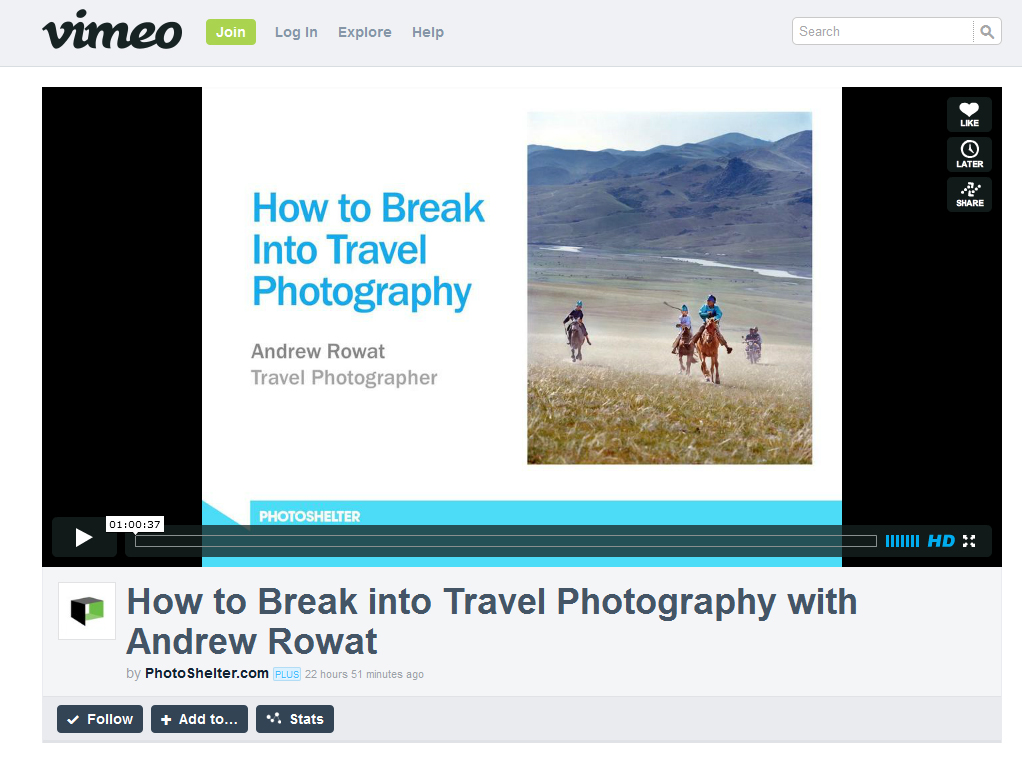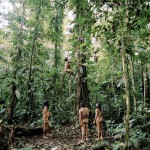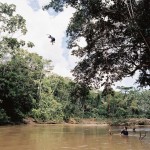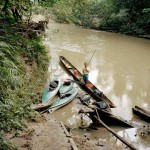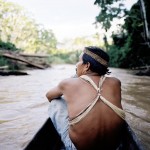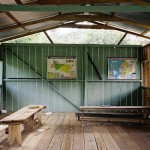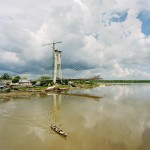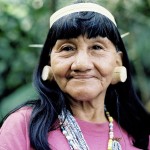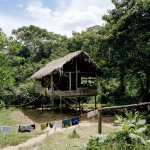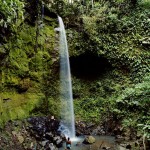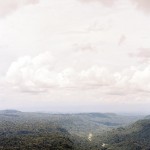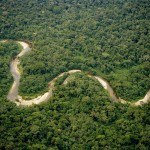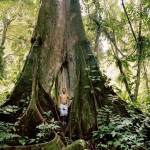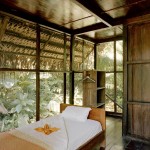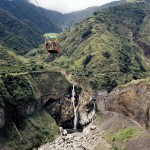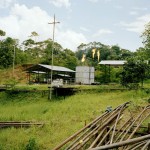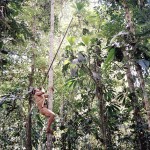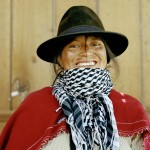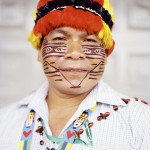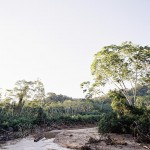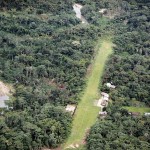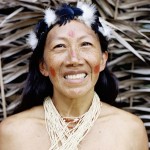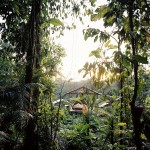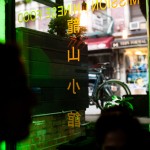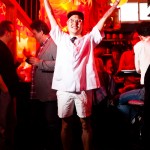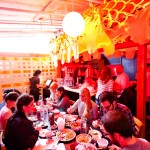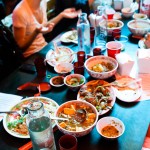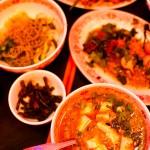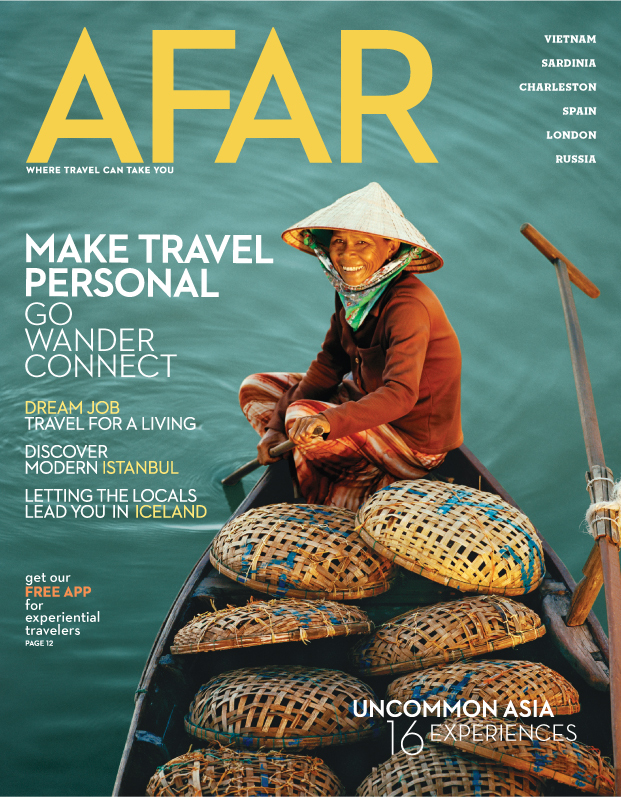Archive for the ‘Photography’ Category
World Class Skiing + World Class Food = Victory
January 24th, 2013
Because, I mean, really, who turns down a job to ski AND eat at one of the best resorts in the world?! Not me, I can tell you that much. And so off I went, armed with a brief from New Yorker staff writer Nick Paumgarten, who had spent his childhood vacations exploring the mountains and ski runs around Zermatt.
I spent the next five days eating and skiing my way around the Swiss resort and venturing into Italy as well to see how the Italians ski and eat – very well it turns out.
It is also important for me to give a shout-out to the amazing founders of Epic Europe, Jack Shaw and Susanna Magruder, without whom I would not have been able to complete the shoot. Besides being amazing company (first and foremost) they also know the mountain (and everyone on it) inside and out and helped me lug far too much camera gear up and down and up again. If you are planning an adventure or food-centric trip to France, Switzerland, or any region in the Alps then look no further than Epic Europe. They’ll sort you out.
You can see more outtakes on my site here: http://andrewrowat.com/travel/zermatt_food_ski-all.html
You can pick it up on newsstands now (the Feb 2013 issue) or see how it ran here: rowat_bona_201302_zermatt-ski-food
Crumbling Burmese Architecture for WSJ Magazine
January 24th, 2013In October of last year I had the wonderful opportunity to travel to Burma to photograph at the behest of WSJ magazine. I was following in the footsteps of writer Tony Perrottet as he painted a vivid picture of the challenges surrounding the preservation of colonial architecture facing Yangon (formerly Rangoon) as it opens itself up to further tourism and regional investment.
The architecture in Yangon – and all the crumbling buildings – was like catnip for a photographer like me who absolutely loves photographing the spaces that we as people inhabit. I also had the good fortune of travelling on to Bagan and Inle Lake to explore more of the country.
I am planning on going back to Burma this year on a number of occasions (it is a bit of a commute) to continue photographing the country as part of a personal project.
You can see how the story ran here: rowat_wsjm_201302_burma-architecture
You can see some additional outtakes here: http://andrewrowat.com/travel/burma-all.html
Black Ink Magazine – Paul Pairet’s Ultraviolet Restaurant in Shanghai
January 24th, 2013
WSJ Magazine – Nov 2012 – Artist KAWS Profile
November 5th, 2012This past summer I got to hang out with artist Brian Donnelly, better known as KAWS at both his Williamsburg studio as well as in a top-secret location where his float for the Macy’s Thanksgiving Day Parade was being inflated for the first time. If you pick up a copy of the Nov 2012 issue of WSJ you can read his profile as well as check out a couple of my photos as well.
Or, if the very thought of heading out the door to actually physically pick something up fills you with unspeakable dread, you can instead check out the online link instead here: http://online.wsj.com/article/SB10001424052970204425904578072631528135710.html?mod=WSJ_Magazine_LEFTSecondStories and you have to click on the video link too to check out the fun time-lapse I shot that shows the float being inflated and then deflated: http://online.wsj.com/article/SB10001424052970204425904578072631528135710.html?mod=WSJ_Magazine_LEFTSecondStories#articleTabs%3Dvideo
And of course there is the PDF here: rowat_wsjm_201211_kaws_brian-donnelly
The character that is pictured here is called ‘Companion’ and you can catch him live during the Macy’s Day Parade if you are in NYC over Thanksgiving.
Travel Photography Q&A Over on the Photoshelter Blog
July 26th, 2012You can see some of the Q&A from yesterday’s webinar over on the Photoshelter blog here: http://blog.photoshelter.com/2012/07/answering-the-unknowns-of-how-to-break-into-travel-photography/
You can also see it below, here. Thanks to Lauren over at Photoshelter for formatting everything on their blog and cleaning up my grammar.
Like most photographic specialties, travel photography is littered with the unknown: Can I pitch the same story to multiple clients? How can I back a light travel bag that still has all the equipment I’ll need? Do I need a model or property release for everything I shoot? Can I even get paid for doing this?
 Fortunately, travel photographer Andrew Rowat was ready and willing to answer all the above questions and more. The following video is a recording of a live webinar with Andrew and PhotoShelter Chairman Allen Murabayashi. Andrew, who vowed never to become a photographer when he was younger, has since become a go-to travel guy in Asia for publications like Conde Nast Traveler, Travel + Leisure, Vanity Fair, and more. He was named one of PDN’s rop 30 photographers to watch in 2006 and now splits his time between Shanghai and New York.
Fortunately, travel photographer Andrew Rowat was ready and willing to answer all the above questions and more. The following video is a recording of a live webinar with Andrew and PhotoShelter Chairman Allen Murabayashi. Andrew, who vowed never to become a photographer when he was younger, has since become a go-to travel guy in Asia for publications like Conde Nast Traveler, Travel + Leisure, Vanity Fair, and more. He was named one of PDN’s rop 30 photographers to watch in 2006 and now splits his time between Shanghai and New York.
Andrew shared his experience on how to land your first client and negotiate contracts that initially try to take advantage of you, and also discussed the importance of personal projects.
We asked the audience to send in their questions, and boy, did you ask a lot! Below are Andrew’s answers to the first chunk – more to follow in our next blog post.
Is it okay to pitch the same idea to several editors at the same time and hope that one of them picks it up? Or is it better to approach them one at a time with your idea with a deadline – and then if they do not want it move onto the next name in your list?
One at a time – you don’t want to find yourself in a situation where more than one magazine says yes to something at a time. Keep in mind that your deadline (‘I need to hear from you in a week’) may not match their time schedule. Also keep in mind that a astonishingly small number of magazines actually take pitches from the photo side of things; it is almost 100% from the writer side of things depending on the magazine.
What’s in your camera bag and what equipment have you found is best for travel? Also, what’s the most efficient way to edit on the road? Ipad? Small laptop?
It depends on the job. I have three bags that get modified as needed. If I am shooting digitally I have a Canon setup (Canon 1Ds MKIII and Canon 5D MKIII) with a lot of fast primes, all the tilt-shift lenses, and a 70-200 2.8. About 50% or more of the travel jobs I shoot are still with medium format film cameras. For those I use 2x Mamiya 7 and 2x Mamiya RZ67. My lenses range from 50mm to 350mm (Keep in mind that 90mm is a ‘normal’ lens for 6x7cm film, similar to what a normal 50mm lens would be on a 35mm camera). I also have a large format rig that I use for some travel jobs, or my own work, or architecture and design. It is a Linhof Technikardan 4×5” and it is absolutely wonderful to work with. I have lenses from 72mm to 450mm.
If I am shooting film absolutely no editing happens on the road – which can be a nice thing as you are normally pretty knackered at the end of the day anyways. If I am shooting digitally and there is a tight turnaround time, I do all of my editing in Microsoft Expression Media. This program used to be called iView, and was subsequently purchased by Microsoft, who in turn sold it on to Phase. So in its current incarnation it is called Media Pro. I don’t have experience with the latest incarnation so can’t comment on what it does/doesn’t do.
I try to adhere more or less to Peter Krogh’s editing/asset management principles that he lays out in the excellent book The Dam Book. I do all of my editing on the road on a laptop – I am not familiar with what is available for things like an iPad, but I imagine I would quickly become frustrated if that is all I had. Good to show clients on location images, but probably not the most efficient way to email/ftp/edit images. For the record I normally use Lenovo laptops.
I think when you choose to upgrade you just want to get something that has a decent screen, a decent processor if you are doing any export on the road, and a minimum 8GB or RAM. Other than that it is a price point question.
Can you please touch on language barriers and getting access to photographing things tourists can’t?
If I am in a place where there is a potential language barrier, I normally have a local fixer or assistant to help with that. That being said you would be amazed at what you can accomplish with wild gesticulations, smiling, and trying to write things down. If there is specific access required that is normally (though not always) arranged ahead of time – i.e. you find out who is in charge of that place (say a museum) and deal with the PR or Marketing people. Sometimes you just have to wing it and explain on the fly and then hope for the best.
As a photographer enthusiast, what would you recommend for someone who is interested in getting into travel photography? Should they take specific courses, attend specific events, etc.?
‘Travel’ photography isn’t really any different than other types of photography, other than that you are trying to transport someone from their cubicle, cage, or otherwise to a place they all of sudden now want to visit. I would say take as many photography courses as you can – because it is all transferable to travel. At the end of the day, a huge component of evocative travel photography is the light. There is a reason we grumble out of bed at 4am and stagger into the early morning light – it’s beautiful.
What makes “the image” – the one that shows up in a magazine? What specifically are photo editors looking for in the shots?
When a Photo Editor makes their edit (from the one you gave them) they are trying to balance a few different things. The images that you took need to mesh with the story that was written. So if there are specific places (hotels/restaurants/markets/people) that the writer mentions in the copy, then there is a good chance that some of those shots will make it into the piece. There is nothing more frustrating when reading a story than to have this incredible description of a place and then not have a picture to accompany it. So that is one component.
Another component is that the pictures need to work well together in the flow of the story, and this is also true when you put together a portfolio -there needs to be a narrative to how the images are strung together. And there needs to be layers in the images, and by layers I might literally mean foreground/background, but also that the you don’t have scenic scenic scenic scenic all stacked next to each other. A close-up. An interior. A portrait. A food dish. A vista. Your eye gets less tired and engages more on the images when they aren’t all the same. Keep an eye out for that the next time you are looking at a travel magazine. A good layout will mix-up the different types of photos that are facing each other or next to each other.
What is the pay range and how is it figured – number of days, by the job, pictures used, etc.?
The pay scale is all over the map, but basically falls into two different categories: Day Rate + Expenses, or All-In Budgets. For the former, the Day Rates range from $350/day on the low end to about $600/day on the high end. Assistant rates fall in the $150/day to $250/day range (as dictated by the magazine). All of your expenses (flights, hotels, food, film, etc) are on top of this. Some magazines have budgets for equipment, and others don’t, but that can be a line item as well. For All-In Budgets, they are exactly how they sound – all of your expenses come out of one bucket – that is your creative fee (day rate), assistant, flights, hotel, etc.
How much prep time and are you expected to make travel arrangements or help determine story points or locations? Do you ever get or need an assistant?
Prep time varies quite a bit – but normally you will have a heads-up of several weeks to a couple months. Sometimes the magazines handle the travel arrangements (flights/hotels) and sometimes I handle them myself. Especially when I was living in China the latter was the easier (and cheaper) option.
I certainly am able to bring an assistant with me on most jobs; though not all. Or sometimes you need to find someone locally to use
Please address the issues surrounding releases, i.e. if I am engaged in street photography, what uses are prohibited if I don’t get releases from people who appear in the images?
If you are in the US (and every country has their own privacy laws) and you photograph someone in the street, you can use that image in an editorial way – i.e. for a magazine. Or you can use it for your own personal art work. Basically the fine line is when you start to use that image in an advertising or promotional way, where you are trading their likeness for compensation. At that point you need a release. I should note that I have (knock on wood) never had any issues with releases for the travel work that I do and hardly ever carry them.
What do you think is the average capital investment one should take into account? How long, in average, should one wait in order to start making some money out of this business?
That is going to depend on what you want to do exactly. I think it is something that you build up over time. When I first started working for magazines I had one Mamiya RB67 with a 50mm lens and a 90mm lens. I also had a Mamiya 7 with a 80mm and a 150mm lens. That was it. That whole kit you can probably get from keh.com for less than $2000 used right now. I now have much more gear than that now, but the point is that you start with what you can afford.
I don’t think that there is an ‘average’ amount of time. If you are wanting to do exclusively travel editorial it can be a pretty bruising experience. I think that PDN maintains a list of what different photographers make in different fields, but travel editorial is certainly not at the top of the list. Count on a few years in any case if it is your sole source of income.
What is the best thing we can actively be doing to promote and market ourselves to get in front of editors or other buyers?
Have an amazing website and internet presence where editors and prospective clients can see big beautiful images of yours immediately. That is a baseline. Then target who you want to see your work. I don’t think that ‘broad spectrum’ marketing works super well. Just find out who you want to work for and then try to send them emails/actual mail and then finally a phone call once the email/mail has gone through
What personal qualities or characteristics do you think one should have to be a successful travel photographer in the current market?
Your images have to be fantastic to begin with. That is the starting point. To crib from Chase Jarvis: “Your work needs to be undeniably good.” Beyond that, you need to deliver – every single time. An editor is entrusting you to shoot a story on their behalf. And they need to know that you are going to nail it every time you go out there.
On a personal level in the field I think it is super helpful to be adaptable because situations change a lot; but sometimes to be inflexible to really get the shot you need; and to be gregarious to a degree because you are interacting with people a huge amount of the time
What are your most challenging/hardest days like?
The weather is terrible. The jetlag has you pinned under a ton of bricks. None of the places you were meant to shoot that day are available any more; and you are basically getting no good pictures. Those are grumpy days for sure.
Can you please talk a little about stock photography?
I generate about 30% of my revenue through what I will loosely describe as ‘stock’ sales. This falls into a few different categories:
- An editor sending out an email to all the photographers in her rolodex saying “We are doing a story on Barcelona and wonder if you have photos of X, Y, and Z.” So I then zip a note off to that editor with an edit and if they like any of the images they license them. That is a stock sale.
- The big players – like Getty and Corbis – who will market and license your images on your behalf and take a princely cut while they are at it. But this gives you access to markets that you wouldn’t otherwise be able to reach. So in many ways that is found money.
- Photoshelter also allows you to license your own images through its interface and that can be a real way to make additional income.
- Lastly some of the big magazines (like any of the Conde Nast titles) are syndicated all over the world, so you can receive additional revenue if something that you shot for Conde Nast Traveler ends up running in Vogue Mexico or Glamour UK.
How big should your portfolio be? And what should it show?
The best advice that I ever had when putting together my portfolio was the following: put in your portfolio what you want to shoot. Otherwise why are you getting into the business?
I would say a print portfolio should be in the 40-60 range of images and tell a story. There should be flow and narrative to it. But keep in mind there are no hard and fast rules to the number of images you should have.
I have found that potential clients always prefer to fly in outsiders they may know rather than tapping the photographic talent which knows this region better. How do we solve this problem?
I have been on both sides of this equation when I lived in Shanghai. I would get a tremendous amount of jobs because I lived there; but editors would still often fly people in. I was also (and continue) to be flown to places where there are obviously terrific local photographers as well. So I wouldn’t characterize this as a problem – I can definitely see the benefit to both approaches from an editor’s perspective and think that they can both succeed (or fail).
Local knowledge is absolutely vital to the success of any shoot – and that is why if I am being flown in for a job I will normally have a local fixer or assistant, so that I can piggyback on their knowledge. One of the benefits of flying into a place for a specific job is that you are focused onlyon that one thing while you are there. You are pulling 12 or 14 hour days just in the pursuit of those images. Sometimes when you are based in a place there can be distractions (ie your life) that take away from the amount of time you are able to devote to something. And sometimes a fresh set of eyes can do wonders for a story. It is amazing how quickly we can become acclimatized to what is ‘normal’ in a place when in fact it is absolutely jaw-dropping. Sometimes it takes an outsider to capture that grandeur and excitement. That being said, being based in a place means you are less at the whim of weather and can reschedule if need be; and probably know a ton of places that the outside photographer doesn’t know. It is definitely a double-edge sword.
For those who don’t make it in places like National Geographic & Lonely Planet, is there any scope of making a career as a travel photographer? If yes, what type of customers should a travel photographer target?
Well ‘Travel Photography’ has a problem, and that problem is that there is huge supply (people who want to shoot travel photography) and limited demand (quality outlets for the work), which definitely results in a downward price pressure in terms of day rates/etc. You find this same equation with actors – which is why you have the old cliché of actors working as wait staff. It can be a tough road to choose.
Most photographers who I know that would identify themselves (myself included) as travel photographers also have income from stock and commercial work. I don’t think you can really put all your eggs in one basket and really need to make sure that you are diversified in terms of revenue and your client base. One of the good things about travel photography is that it also encompasses a lot of other niches – lifestyle, portraits, food, interiors and architecture, landscapes, and so on. This means that you are then able to work for a lot of magazines that fall into those categories as well.
Don’t see your question answered here? Stay tuned for our next blog post where Andrew answers the rest of the questions asked during the live event!
Photoshelter Webinar Video now Online with Allen Murabayashi and Yours Truly talking Travel Photography
July 26th, 2012I wanted to say thanks to everyone who joined us yesterday for the Photoshelter webinar on working as a Travel Photographer. And an apology for those of you who tried to sign in but weren’t able to – due to your enthusiasm we saturated the service’s capacity to handle additional participants. So, if you missed us live, you can now listen / watch the whole hour (a great procrastination tool) online over at Vimeo:
I am also going to post the Q&A that is going on over at the Photoshelter Blog here as well so that you can get a taste of some of the questions & answers….
Travel Photography Webinar with Photoshelter – Kicking off in 2 Hours
July 25th, 2012At 4pm EST today I will be participating in a Webinar hosted by Photoshelter co-founder and chairman Allen Murabayashi.You can sign up for the webinar here: https://www2.gotomeeting.com/register/785048874
See you soon I hope!
Conde Nast Traveller – August 2012 Feature – Huaorani Tribe in the Amazon
July 10th, 2012In November of last year I had the great privilege of visiting the Huaorani tribe in the Ecuadorian Amazon on behalf of Conde Nast Traveller UK. The Huaorani gained notoriety in the 1950s for a spear raid that left five missionaries dead. The missionaries’ deaths galvanized the Christian community at the time and ultimately led to a redoubled effort to reach and convert this particular group – this effort was successful (depending on your point of view) and led by the wife of one of the deceased missionaries. It was also the subject of the film ‘End of the Spear’ and the book ‘Through Gates of Splendor’.
At the time the Huaorani were thought of as savages, and were in fact called that by neighbouring tribes – the Auca. Their language is a linguistic isolate, and any non-tribe members were referred to as non-human. The bottom line? A very isolated and unique group of people. To this day there are a couple splinter groups of the tribe that went deeper into the jungle after the initial brush with the missionaries and remain divorced from modern day life and outside contact.
In the intervening 50+ years much has happened in the Ecuadorian jungle, and most of it centers around oil. There is currently a huge court case working its way through the Ecuadorian (and US) courts that pits some of the indigenous peoples against Chevron (which purchased Texaco – the original company that operated in Ecuador). The 2009 documentary ‘Crude’ is an excellent primer on the current situation that essentially pits David vs Goliath.
And that is how I found myself in a single-engine Cessna departing from the town of Shell (naturally) into the heart of the jungle and landing at a tiny airstrip hacked out of the massive trees. A bumpy, slip-sliding landing, and we were safe and sound in Huaorani Territory.
To combat the outsize influence of Big Oil the Huaorani today have set up a small Eco Lodge with the hopes of drawing in tourists (and media attention) and shining a spotlight on their plight. The equation is quite simple: with enough tourists and media coverage they hope to prevent the oil companies from further destroying the forest and eroding their way of life. It won’t be easy, but let me tell you what a delight it was to spend time with the community and the incredible place they call home. The Huaorani’s effort is being led by Moi Enomenga – conservationist and their tribal leader who has taken their message to Washington and beyond.
I am sharing some of the images that I took here (I have even snuck a shot in of yours truly), and you can also take a look at how the story ran in the magazine here: rowat_cnuk_amazon_201208_web
Stanley Stewart wrote the piece and his prose are a wonderful companion to the experience itself – transporting you along the many bends of the river and wrapping you in the magic of it all. If you have an opportunity to go spend time with this group of people I would urge you to do so – few experiences come close to kayaking down a river in the Amazon, alone but for the toucans winging their way above your head.
Mission Chinese Food NYC – Danny Bowien Spices up the Big Apple
May 24th, 2012On Tuesday night of this past week I had the pleasure of heading to Mission Chinese Food NYC to see what Danny Bowien was cooking up in his new Lower East Side digs. As you will (undoubtedly) recall I travelled with Danny and Andrew Knowlton from Bon Appetit magazine to Chengdu earlier this year (http://andrewrowat.com/blog/2012/04/19/bon-appetit-mission-sichuan-spicy-food-in-chengdu-with-chef-danny-bowien-andrew-knowlton) to head to the source of Sichuan cooking. I only had a chance to have a couple dishes at MCFNY, but absolutely loved the mapo dofu and buckwheat noodles – I will be heading back to sample everything on the menu and convince Danny that he needs to have a ready stash of Er Guo Tou (二锅头) on hand at all times.
The location of the restaurant itself (at 154 Orchard St) is tucked downstairs next to a bar and has a long corridor that takes you past the kitchen (you can look through the glass) and into the main dining room guarded by a dragon looming overhead. Or you can check out the Twin Peak-themed bathroom. Really, it’s up to you. But the food is delicious (and super affordable!) and Danny is great, so, well, you should go! (and I apologize for the quality of the photos – they are all snapshots more than anything else, but should give you a feel for Danny & MCF).
AFAR – Hoi An Cau Lau Noodles – May/June 2012 Cover & Feature
May 15th, 2012Just a quick note, with a longer entry to follow. You can go grab a copy of the May/June issue of AFAR magazine to see my story on the Cau Lau noodles of Hoi An, Vietnam,
written by the talented David Farley.
You can check out the whole story here as a PDF: Andrew Rowat’s AFAR magazine Cau Lau Cover Story in Vietnam – May / June 2012
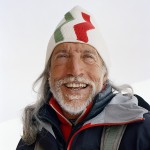
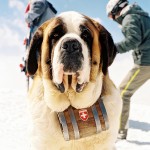


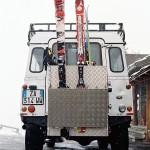

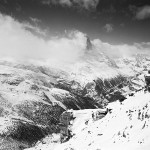
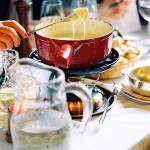

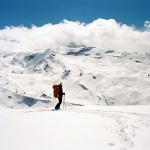
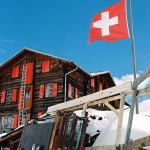

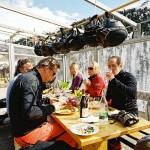
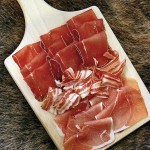





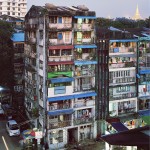
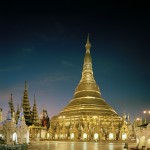

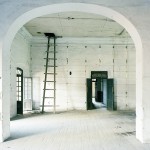
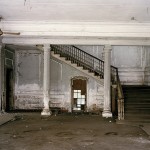
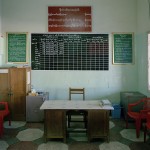
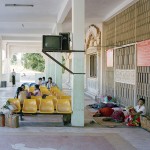

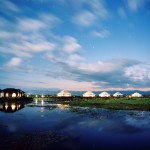


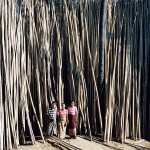
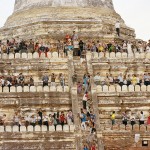
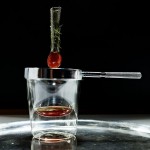
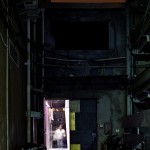
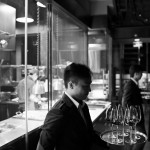
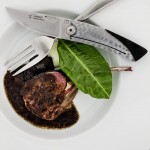


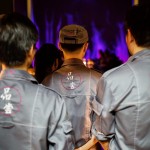
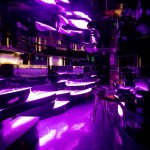
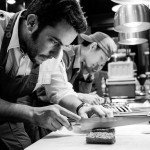







 Live Webinar: How to Break Into Travel Photography with Andrew Rowat
Live Webinar: How to Break Into Travel Photography with Andrew Rowat 7 Tips For Shooting & Selling Nature Stock Photography
7 Tips For Shooting & Selling Nature Stock Photography Congrats to December’s Featured Photographers!
Congrats to December’s Featured Photographers! 28 Resolutions from 28 Seasoned Photographers
28 Resolutions from 28 Seasoned Photographers
